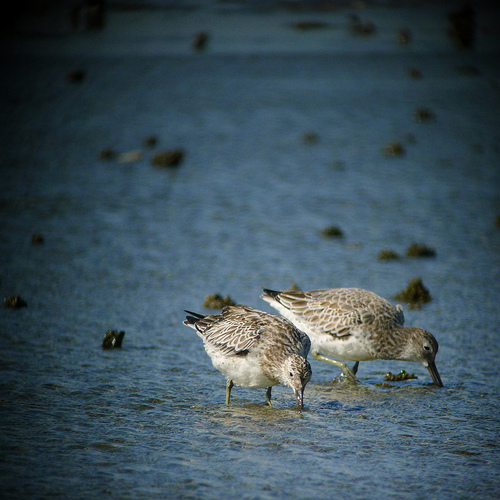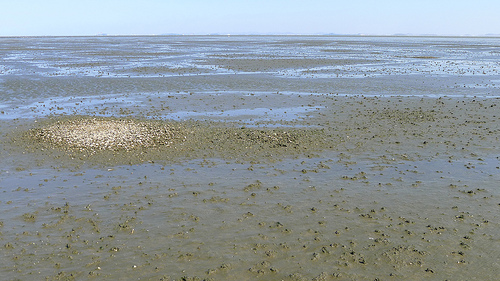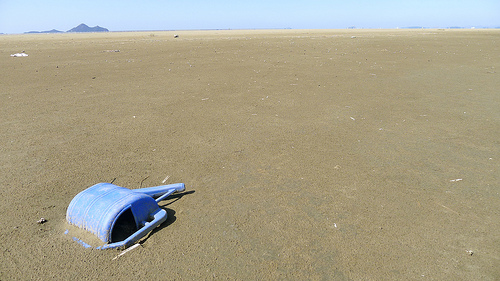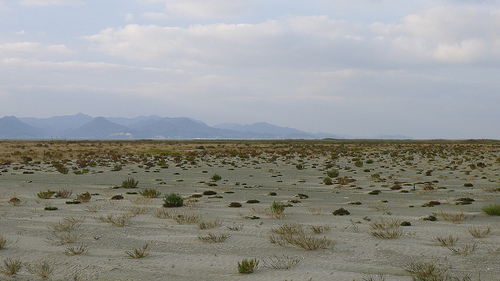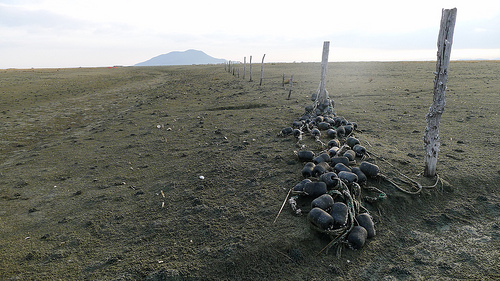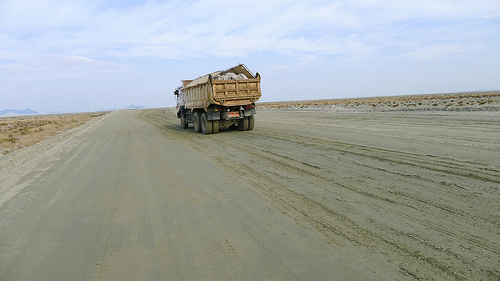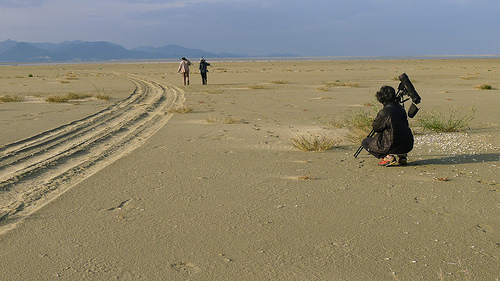This research has culminated in a momentous personal discovery of just how robust and diverse these tidal flats actually are. Of course I have marveled through the magnificent pages of Invisible Connections, but I don’t believe anything could have ever prepared me for this.
Critically Endangered Spoon-billed Sandpiper Eurynorhynchus pygmeus © Jason Loghry/Birds Korea.
Globally Vulnerable Great Knot Calidris tenuirostris © Jason Loghry/Birds Korea.
Mangyeung Estuary; site of feeding Spoon-billed Sandpiper © Jason Loghry/Birds Korea.
The remaining tidal flats of the Yellow Sea are teeming with biodiversity much like any other wild frontier, and they exist right here in our backyard:
Scanning to SBS. Digiscoped Video © Jason Loghry/Birds Korea.
Tragically, at the peak of this revelation I also learned this beautiful thriving ecosystem was only a fraction of what had been, just a few years before. Joining this survey throughout the Saemangeum ‘Estuarine’ System, I realized first-hand just how massive this reclamation actually is. It is unimaginable.
A more degraded area of the Mangyeung Estuary © Jason Loghry/Birds Korea.
Not long ago, a tidal flat. Outer Dongjin, Saemangeum Estuarine System. © Jason Loghry/Birds Korea.
Not long ago, a tidal flat. Outer Dongjin, Saemangeum Estuarine System. © Jason Loghry/Birds Korea.
Not long ago, a tidal flat. Outer Dongjin, Saemangeum Estuarine System. © Jason Loghry/Birds Korea.
Not long ago, a tidal flat. Outer Dongjin, Saemangeum Estuarine System. © Jason Loghry/Birds Korea.
So what can we do to help conserve the salvageable and remaining tidal flats of the Yellow Sea?
As a Birds Korea volunteer, I am proud of being part of this organisation doing all we can, with the help of others, to conserve this very special habitat. I am convinced with the dedication of Birds Korea and its members, we have and will make a difference. Please join us.


